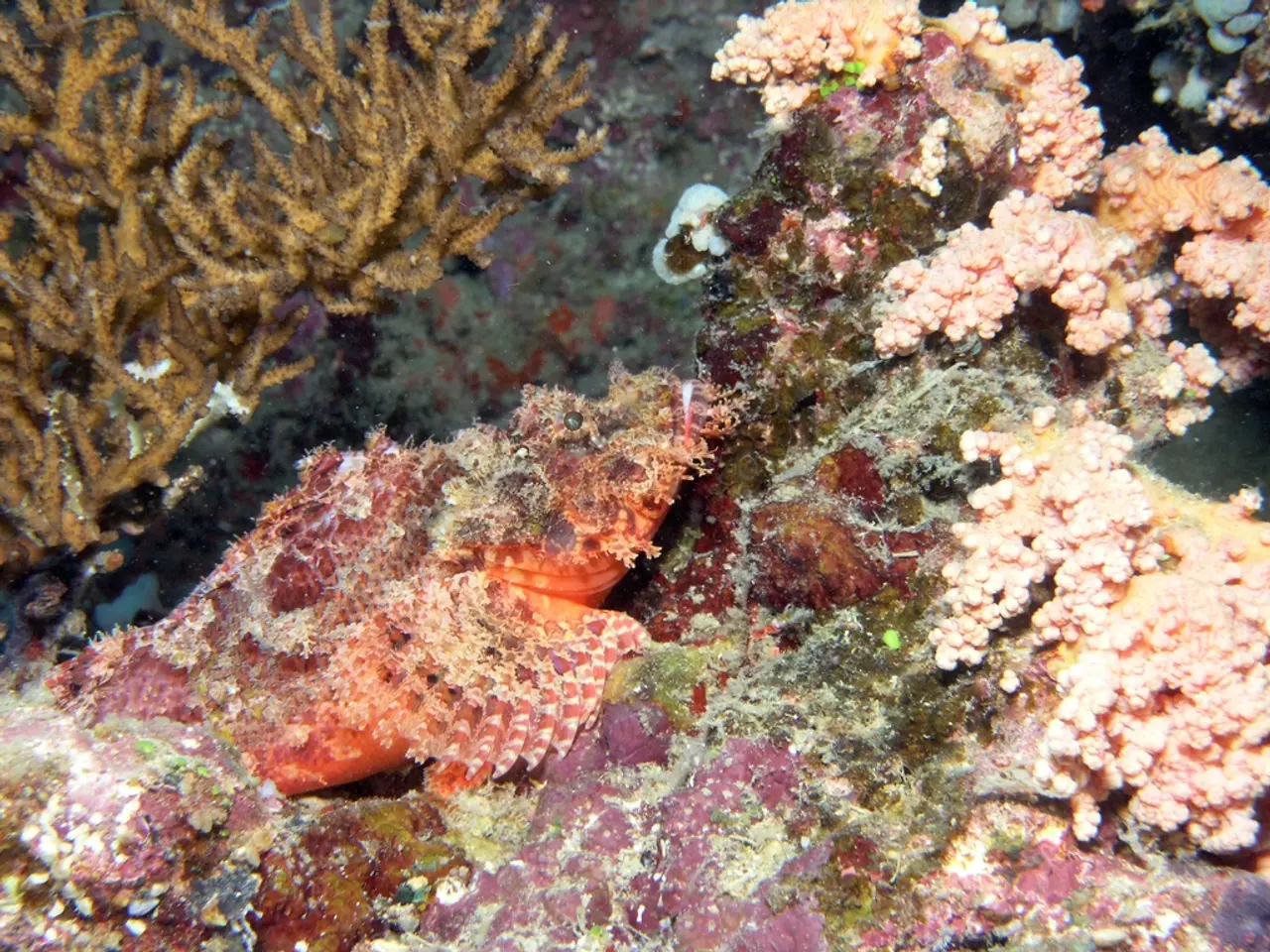Underwater Vegetation Havens: Kelp Forests and Their Significance on a Global Scale
Kelp forests, the underwater giants that grace the world's oceans, are facing significant challenges. Warming ocean waters due to climate change, pollution, disease-driven sea star die-offs, and urchin overgrazing are the key threats that are reducing kelp survival, disrupting ecological balance, and causing kelp forest decline.
Rising temperatures make it harder for young kelp to survive and can kill mature kelp. Bull kelp, in particular, is sensitive to temperature changes. Summer heat waves exacerbate this effect [1][3]. Agricultural runoff, industrial pollutants, and physical damage harm kelp growth and health [2][1].
A devastating bacterial disease, caused by a strain of Vibrio pectenicida, has led to massive sea star die-offs since 2013. These sea stars, especially sunflower sea stars, prey on sea urchins that graze on kelp. The loss of these key predators has resulted in unchecked sea urchin population explosions, causing severe overgrazing and the wiping out of vast kelp forest areas [4][5].
Conservation efforts addressing these threats involve kelp restoration projects, such as bull kelp gardening and planting trials to find the best methods and timing for kelp grow-out and transplantation in affected areas [1]. Research on disease and pathogen identification in sea stars is also underway to inform targeted interventions that may help mitigate sea star population losses and restore predator-prey dynamics [4][5].
Monitoring and reducing pollution sources impacting kelp ecosystems is another crucial aspect of conservation. Adaptive management under climate pressures, including identifying kelp variants or growth strategies resilient to warming conditions, is an ongoing research area [3].
Kelp forests are more than just underwater wonders; they are captivating educational resources, offering opportunities for snorkeling, diving, virtual reality experiences, and educational programs led by aquariums and research centers. Some initiatives harness technology, using underwater drones to monitor kelp health and breeding heat-resistant varieties to withstand warmer waters.
The health of kelp forests is a shared responsibility, as their fate is intertwined with our own, particularly in the context of climate change and unprecedented oceanic changes. The global presence of kelp forests underscores their importance in supporting artisanal fisheries, providing shelter for endangered species, and being woven into the fabric of many different cultures and economies.
Human activity and environmental change also pose threats to kelp forests, including overfishing of key predators, pollution, warming oceans, and the spread of diseases and invasive species. However, scientists, conservationists, and local communities are working together to restore and protect kelp forests through innovative projects such as replanting kelp, culling sea urchins, and reintroducing keystone species like sea otters.
Community-led efforts, such as citizen science programs and marine reserves, have shown remarkable results in boosting kelp recovery. The beauty, productivity, and generosity of kelp forests make them irreplaceable treasures that demand our respect, care, and urgent action. Kelp forests stand as symbols of resilience and hope in the face of adversity.
- To combat the threats facing kelp forests, conservation projects like bull kelp gardening and transplantation trials are being implemented.
- The loss of key predators, such as sea stars, due to disease has led to uncontrolled sea urchin populations and kelp forest destruction.
- Climate change is causing increased temperatures that make it difficult for young kelp to survive and kill mature kelp, particularly bull kelp.
- Research on disease and pathogen identification in sea stars is essential to inform interventions that could help mitigate sea star population losses.
- Monitoring and reducing pollution sources impacting kelp ecosystems is a crucial part of conservation efforts.
- Kelp forests provide educational opportunities through activities like snorkeling, diving, and virtual reality experiences led by aquariums and research centers.
- The health of kelp forests is important for supporting endangered species, artisanal fisheries, and various cultures and economies, making their preservation a shared responsibility.
- Through community-led initiatives like citizen science programs, marine reserves, and the reintroduction of keystone species, humans and conservationists are working together to restore and protect kelp forests.




